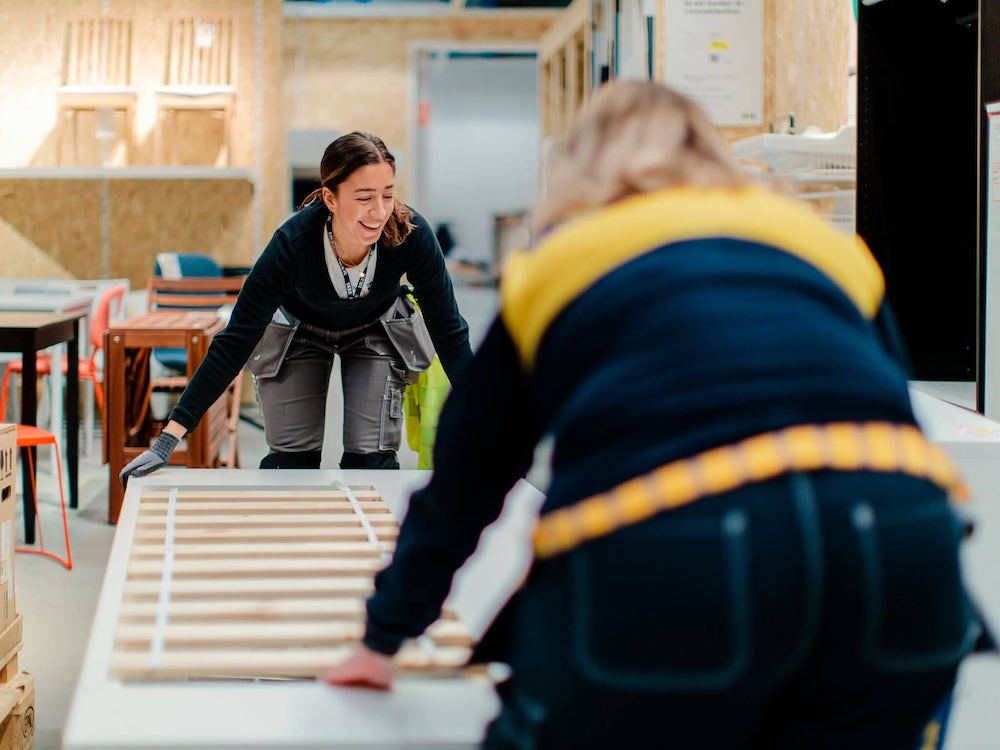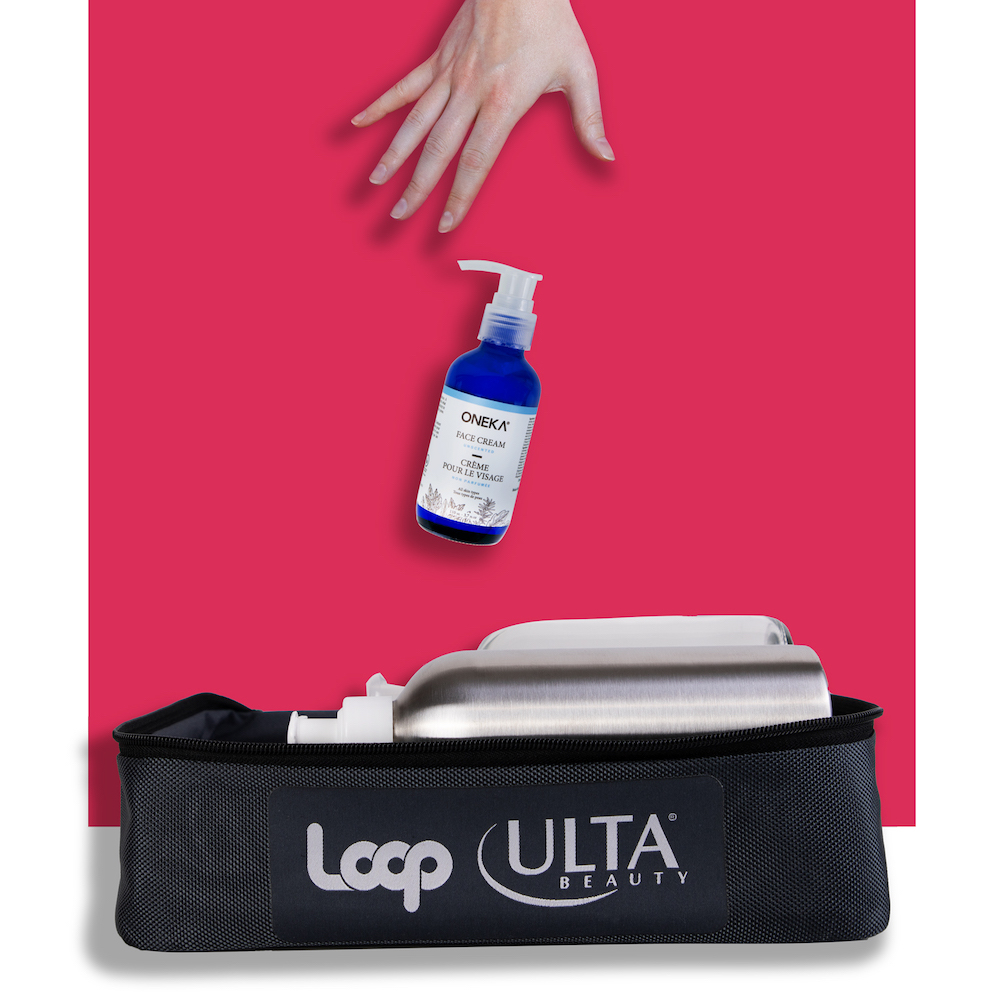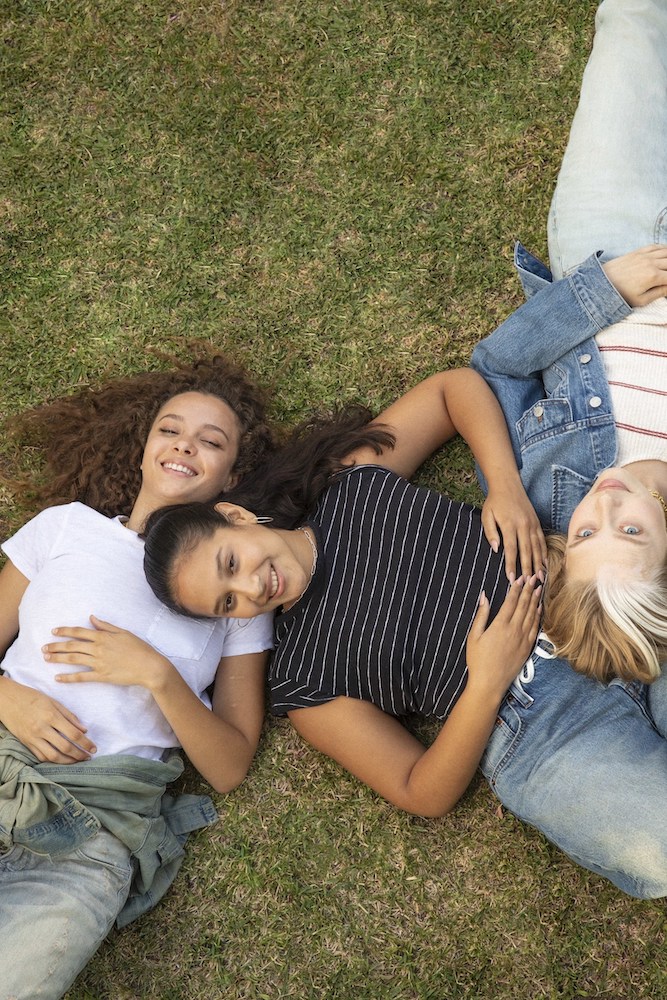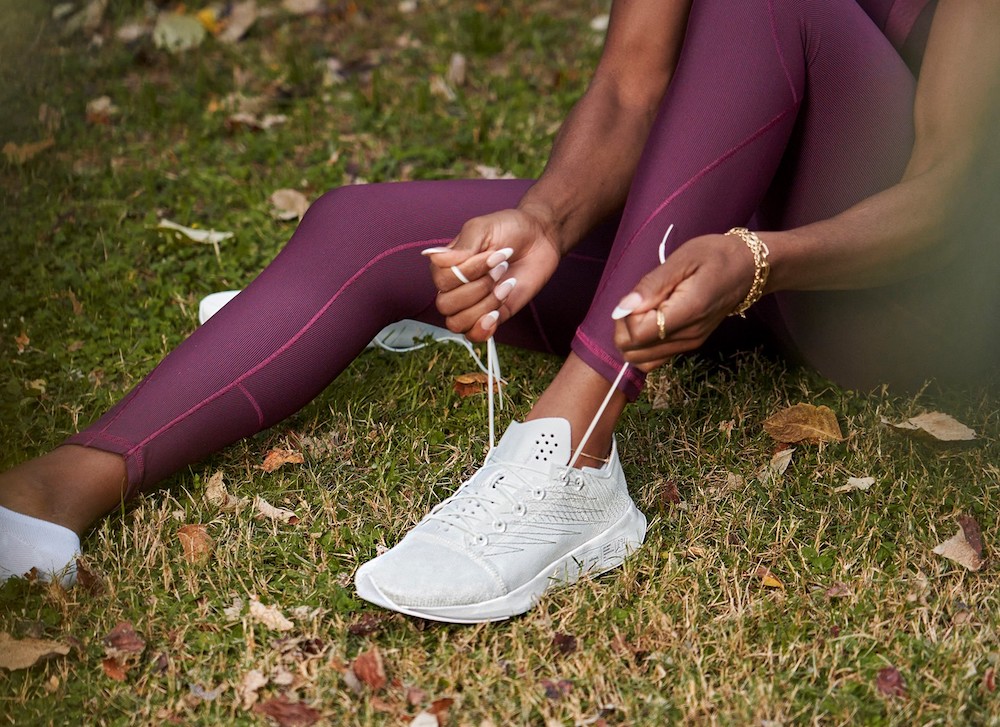Economy
10+ Brands That Embraced the Circular Economy in 2021 – Triple Pundit
Pledges to use more recycled materials are increasingly falling short as the public grows more concerned about the global waste problem and seek out solutions to lighten their footprints. While solutions still need to scale, a growing number of brands are looking to pave the way toward a circular economy in which nothing becomes waste. From reusable and dissolvable packaging to giving secondhand goods a new life, read on for some of the top circular economy solutions that caught our eyes in 2021.


Tim Hortons tests reusable packaging with help from Loop and Tupperware
Tim Hortons gave reusable a try in 2021 with help from the container masters at Tupperware and the reusable packaging platform Loop. In November, the Canadian fast-food giant began testing a reusable packaging option designed by Tupperware at select locations around Toronto.
Guests pay a $3 deposit for the packaging, which is refunded when they return it. “Through this test we’ll start learning how guests respond to a reusables and returnable packaging system — what they like or don’t like — with the aim of refining a system that is seamless and enjoyable for more guests in more cities in the future,” Paul Yang, senior director of sustainability and packaging for Tim Hortons, said in a statement.
Tim Hortons is among a number of brands testing the water with reusables in partnership with the Loop platform. This circular economy pilot is also a first for Tupperware, which linked up with Loop back in 2020 to provide insight and expertise on reusables. Additional reusable package options created by Tupperware will be available to more of Loop’s brand partners in 2022, the company says.


McDonald’s and Starbucks trial reusable cup programs
McDonald’s trialed a reusable cup program in the U.K. last summer, also in partnership with Loop. Customers at six restaurants could order their morning cuppa in a reusable mug for a deposit of one British pound, which they got back when they returned the cup, along with a discount on their next order.
Meanwhile, after two single-store tests in 2020, Starbucks expanded its Borrow A Cup program to five stores in Seattle from March through May of 2021, in partnership with a Seattle-area service called Ridwell. Like the McDonald’s program, Starbucks customers simply pay a $1 deposit to order with a reusable cup, and they’ll receive points for refunds through the chain’s rewards program when they bring it back.
Both companies say they’re looking to learn from the pilots as they look to expand reuse programs to more locations in pursuit of a more circular economy for their products and packaging.


Ikea scales furniture buyback and resale program across the U.S.
Ikea’s large-scale furniture buyback program was a smash hit when it launched in 27 countries in 2020, including Germany, Australia, Canada and Japan. In 2021, U.S. consumers got their chance to take part.
After piloting the program in Conshohocken, Pennsylvania, where the company says 100 percent of products brought in were resold, Ikea rolled it out to all of its U.S. retail stores in November of last year. Mirroring the global program, U.S. customers can get store credit for their gently used, unmodified Ikea furniture that is resold in the stores’ as-is section.


Ulta brings reusable beauty packaging to the masses
With more than 1,200 U.S. stores and over 30 million loyalty members, Ulta Beauty is one of the top mainstream retailers for cosmetics, skincare and haircare products. And in 2021, Ulta shoppers got a chance to try some of their favorites in reusable packaging, thanks to the retailer’s partnership with (you guessed it) Loop.
Starting in March, the Loop x Ulta Beauty online store was regularly updated with new products, with participating brands including Burt’s Bees, Mad Hippie, Melanin Essentials and Oneka. Customers from all 48 contiguous U.S. states could have their choices delivered in reusable packaging and send them back to be refilled.
The pilot wrapped at the end of November with no official word on the next step, but Ulta remains listed as a partner on Loop’s website, so we’ll likely see more from these two in the year ahead.


Leading U.K. meal kit company unveils dissolvable film made from pea protein
Perhaps even better than giving waste a second life, a big part of the circular economy of the future will be innovating to eliminate unnecessary waste altogether. This clever innovation from B Corp meal kit company Gousto is a case in point.
Billed as the “world’s first edible stock sachet,” this innovative design co-created with the sustainable packaging experts at Xampla offers an alternative to those plastic packets around vegetable bouillon cubes. Rather than deal with wasteful and hard-to-open sachets (hello, wrap rage), simply drop these dissolvable, flavorless pea protein capsules in the pot and go on with the recipe.


Madewell partners with ThredUP to expand denim trade-in and recycling program
Casual brand Madewell has long offered $20 vouchers to customers who recycle their gently-used jeans in store. In 2021, it took the next step toward building a circular economy for denim by partnering with the digital resale shop ThredUP to sell more secondhand Madewell apparel online.
The Madewell Forever secondhand shop launched in July with Madewell apparel donated online through ThredUP as well as denim that is collected at Madewell retail locations. The company says giving denim a second life reduces its environmental footprint by up to 82 percent, and it’s out to collect 1 million pairs of denim by 2023.


The North Face eyes the circular economy for “top materials” by 2025
To mark Earth Day in 2021, beloved outdoor brand the North Face upped the ante on the circular economy with a pledge to use recycled, regenerative or renewable sources for 100 percent of its top materials by 2025. The company says it will use three core initiatives — its free repair program, its clothing recycling program Clothes the Loop and its re-commerce platform the North Face Renewed — to keep its products in use longer and source better materials in pursuit of circularity. The brand plans to release its first fully circular apparel line later this year.


Dove is the latest Unilever brand to explore refillable packaging
In pursuit of a more circular economy for packaging, Unilever brand Dove has pledged to reduce or eliminate single-use plastic where possible and use recycled feedstock for plastic material it can’t avoid. Various Unilever brands have also dappled in refillable packaging in recent years, including a partnership with the Loop platform and in-store refill trials in Europe.
At the start of 2021, Dove became the most recent brand to jump on board with a refillable stainless-steel deodorant pack that’s both attractive and functional. Dove says the refillable option is only one of 100 projects it’s working on to eliminate non-recycled, single-use plastic across all products.


Adidas and Allbirds collaborate on a low-carbon sneaker featuring recycled materials, with other footwear brands bringing their own ideas to the playing field
Veteran footwear brand Adidas and sustainable upstart Allbirds made waves across the apparel industry in 2021 when they decided to team up to create a low-carbon performance shoe. Less than eight months later, the Futurecraft.Footprint shoe was ready for market.
Each pair creates less than 6.5 pounds of carbon dioxide equivalent emissions, compared to about 30 pounds for the average running shoe, and circular economy concepts have a lot to do with that. Designers considered pattern and manufacturing efficiency to reduce waste during assembly and sourced biodegradable and recycled materials associated with a lower carbon footprint.Among the other footwear and circular economy developments in 2021: Nike revamped popular styles like the Blazer Mid, Air VaporMax and Free Run 5.0 with recycled materials, while luxury label Roscomar looked to plant-based and renewable materials in its most sustainable shoe to date.
Economy
Biden's Hot Economy Stokes Currency Fears for the Rest of World – Bloomberg


As Joe Biden this week hailed America’s booming economy as the strongest in the world during a reelection campaign tour of battleground-state Pennsylvania, global finance chiefs convening in Washington had a different message: cool it.
The push-back from central bank governors and finance ministers gathering for the International Monetary Fund-World Bank spring meetings highlight how the sting from a surging US economy — manifested through high interest rates and a strong dollar — is ricocheting around the world by forcing other currencies lower and complicating plans to bring down borrowing costs.
Economy
Opinion: Higher capital gains taxes won't work as claimed, but will harm the economy – The Globe and Mail
Canada’s Prime Minister Justin Trudeau and Finance Minister Chrystia Freeland hold the 2024-25 budget, on Parliament Hill in Ottawa, on April 16.Patrick Doyle/Reuters
Alex Whalen and Jake Fuss are analysts at the Fraser Institute.
Amid a federal budget riddled with red ink and tax hikes, the Trudeau government has increased capital gains taxes. The move will be disastrous for Canada’s growth prospects and its already-lagging investment climate, and to make matters worse, research suggests it won’t work as planned.
Currently, individuals and businesses who sell a capital asset in Canada incur capital gains taxes at a 50-per-cent inclusion rate, which means that 50 per cent of the gain in the asset’s value is subject to taxation at the individual or business’s marginal tax rate. The Trudeau government is raising this inclusion rate to 66.6 per cent for all businesses, trusts and individuals with capital gains over $250,000.
The problems with hiking capital gains taxes are numerous.
First, capital gains are taxed on a “realization” basis, which means the investor does not incur capital gains taxes until the asset is sold. According to empirical evidence, this creates a “lock-in” effect where investors have an incentive to keep their capital invested in a particular asset when they might otherwise sell.
For example, investors may delay selling capital assets because they anticipate a change in government and a reversal back to the previous inclusion rate. This means the Trudeau government is likely overestimating the potential revenue gains from its capital gains tax hike, given that individual investors will adjust the timing of their asset sales in response to the tax hike.
Second, the lock-in effect creates a drag on economic growth as it incentivizes investors to hold off selling their assets when they otherwise might, preventing capital from being deployed to its most productive use and therefore reducing growth.
Budget’s capital gains tax changes divide the small business community
And Canada’s growth prospects and investment climate have both been in decline. Canada currently faces the lowest growth prospects among all OECD countries in terms of GDP per person. Further, between 2014 and 2021, business investment (adjusted for inflation) in Canada declined by $43.7-billion. Hiking taxes on capital will make both pressing issues worse.
Contrary to the government’s framing – that this move only affects the wealthy – lagging business investment and slow growth affect all Canadians through lower incomes and living standards. Capital taxes are among the most economically damaging forms of taxation precisely because they reduce the incentive to innovate and invest. And while taxes on capital gains do raise revenue, the economic costs exceed the amount of tax collected.
Previous governments in Canada understood these facts. In the 2000 federal budget, then-finance minister Paul Martin said a “key factor contributing to the difficulty of raising capital by new startups is the fact that individuals who sell existing investments and reinvest in others must pay tax on any realized capital gains,” an explicit acknowledgment of the lock-in effect and costs of capital gains taxes. Further, that Liberal government reduced the capital gains inclusion rate, acknowledging the importance of a strong investment climate.
At a time when Canada badly needs to improve the incentives to invest, the Trudeau government’s 2024 budget has introduced a damaging tax hike. In delivering the budget, Finance Minister Chrystia Freeland said “Canada, a growing country, needs to make investments in our country and in Canadians right now.” Individuals and businesses across the country likely agree on the importance of investment. Hiking capital gains taxes will achieve the exact opposite effect.
Economy
Nigeria's Economy, Once Africa's Biggest, Slips to Fourth Place – Bloomberg


Nigeria’s economy, which ranked as Africa’s largest in 2022, is set to slip to fourth place this year and Egypt, which held the top position in 2023, is projected to fall to second behind South Africa after a series of currency devaluations, International Monetary Fund forecasts show.
The IMF’s World Economic Outlook estimates Nigeria’s gross domestic product at $253 billion based on current prices this year, lagging energy-rich Algeria at $267 billion, Egypt at $348 billion and South Africa at $373 billion.
-
Media10 hours ago
DJT Stock Rises. Trump Media CEO Alleges Potential Market Manipulation. – Barron's
-
Media12 hours ago
Trump Media alerts Nasdaq to potential market manipulation from 'naked' short selling of DJT stock – CNBC
-
Investment10 hours ago
Private equity gears up for potential National Football League investments – Financial Times
-
Media24 hours ago
DJT Stock Jumps. The Truth Social Owner Is Showing Stockholders How to Block Short Sellers. – Barron's
-
Business24 hours ago
Tofino, Pemberton among communities opting in to B.C.'s new short-term rental restrictions – Vancouver Sun
-
Business23 hours ago
A sunken boat dream has left a bad taste in this Tim Hortons customer's mouth – CBC.ca
-
News22 hours ago
Best in Canada: Jets Beat Canucks to Finish Season as Top Canadian Club – The Hockey News
-



 Health23 hours ago
Health23 hours agoCancer Awareness Month – Métis Nation of Alberta







